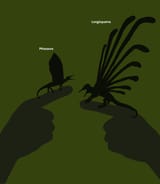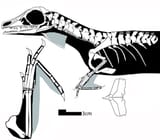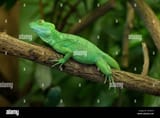Anonymous
7/23/2025, 7:02:10 PM No.5021388
https://www.nature.com/articles/s41586-025-09167-9
>Here we present Mirasaura grauvogeli, a small-sized diapsid from the Middle Triassic epoch (about 247million years ago) with a distinctive crest formed by elongate integumentary appendages extending serially along its back, similar to those of the poorly understood Triassic reptile Longisquama
>Despite its superficially bird-like skull, Mirasaura is not closely related to avemetatarsalians but instead belongs to the exclusively Triassic reptilian clade Drepanosauromorpha
>Melanosomes preserved in its integumentary appendages are consistent in geometry with melanosomes of feathers but not those of reptilian skin or mammalian hair
>Nevertheless, the morphology of the integumentary appendages and phylogenetic placement of Mirasaura indicate that they are not structurally homologous to feathers or other integumentary appendages in living amniotes
Thoughts?
>Here we present Mirasaura grauvogeli, a small-sized diapsid from the Middle Triassic epoch (about 247million years ago) with a distinctive crest formed by elongate integumentary appendages extending serially along its back, similar to those of the poorly understood Triassic reptile Longisquama
>Despite its superficially bird-like skull, Mirasaura is not closely related to avemetatarsalians but instead belongs to the exclusively Triassic reptilian clade Drepanosauromorpha
>Melanosomes preserved in its integumentary appendages are consistent in geometry with melanosomes of feathers but not those of reptilian skin or mammalian hair
>Nevertheless, the morphology of the integumentary appendages and phylogenetic placement of Mirasaura indicate that they are not structurally homologous to feathers or other integumentary appendages in living amniotes
Thoughts?
Replies:



